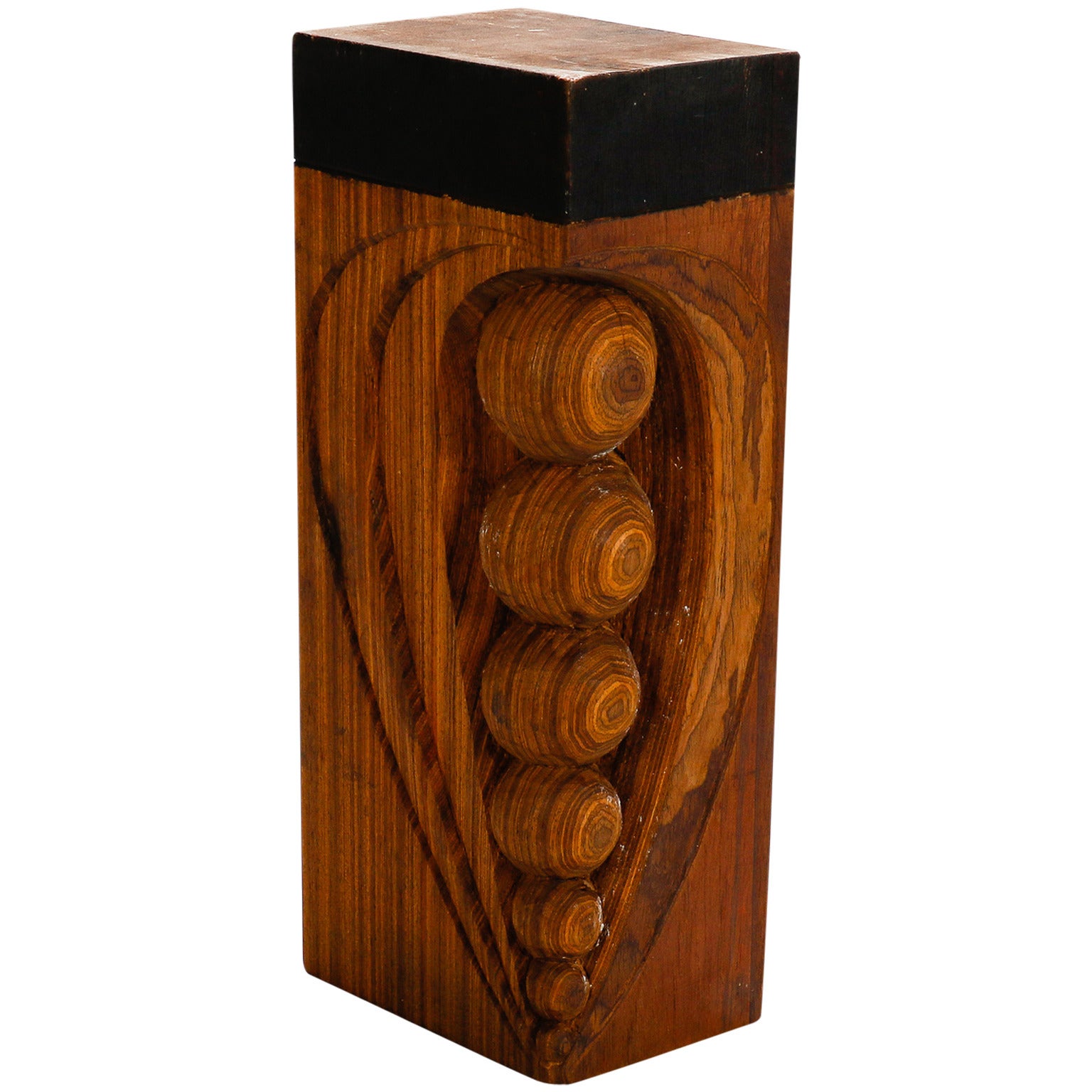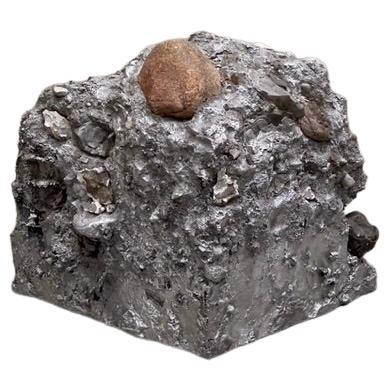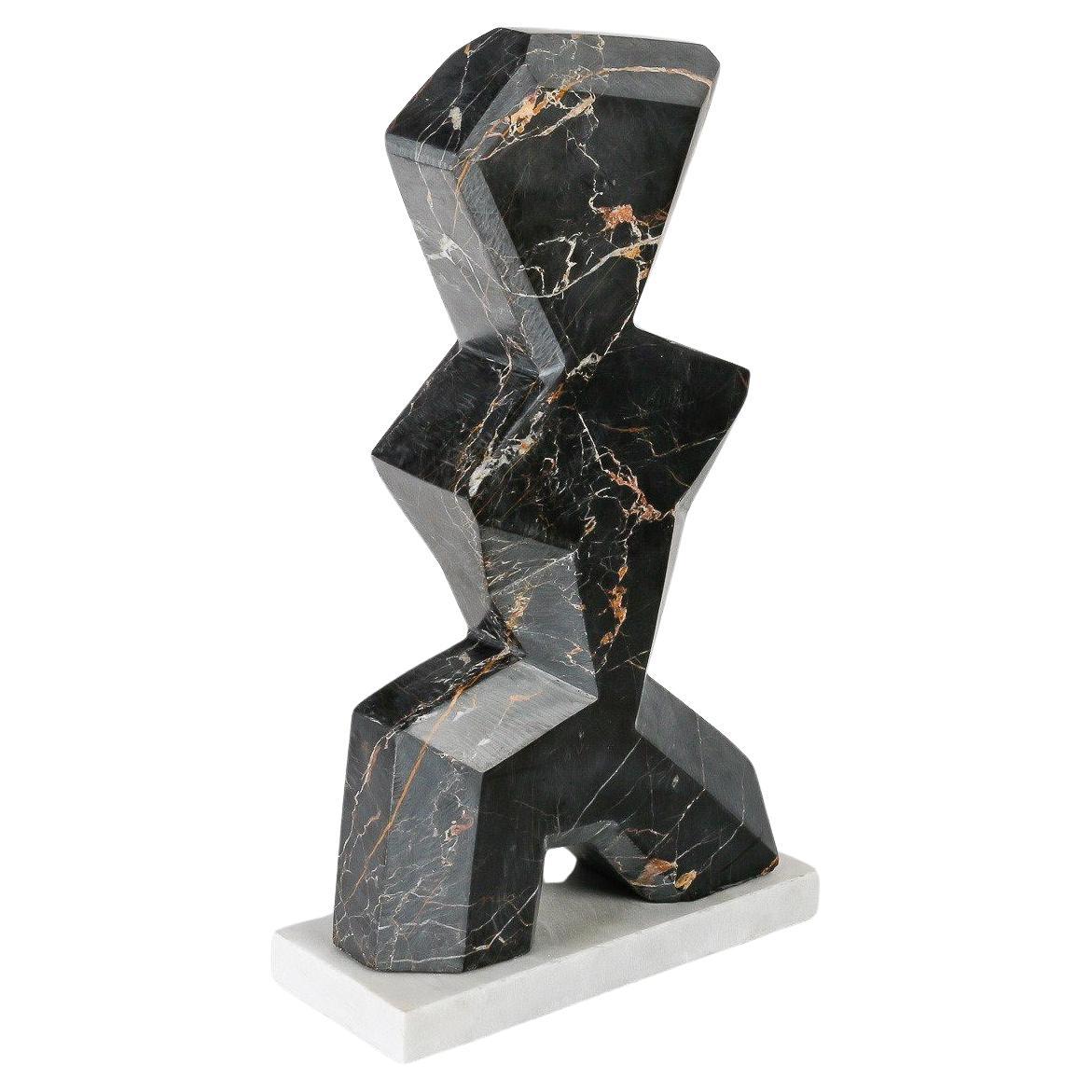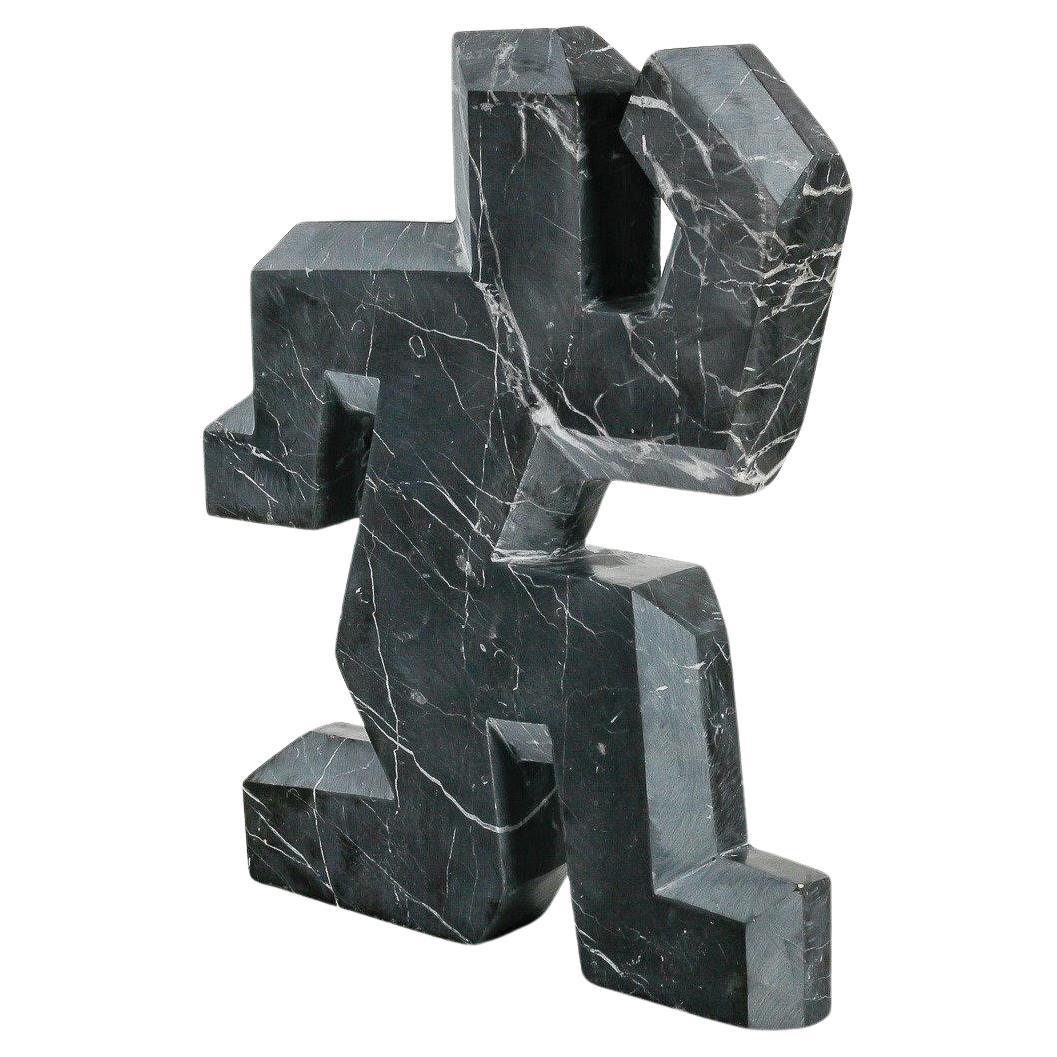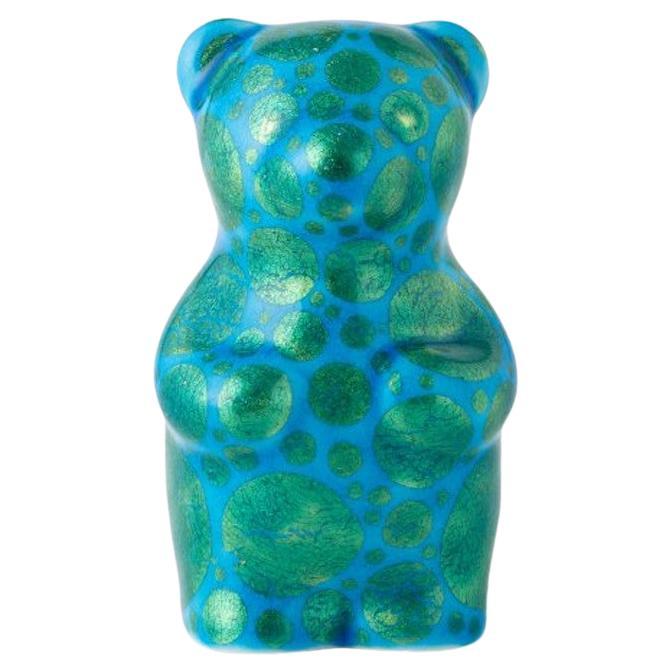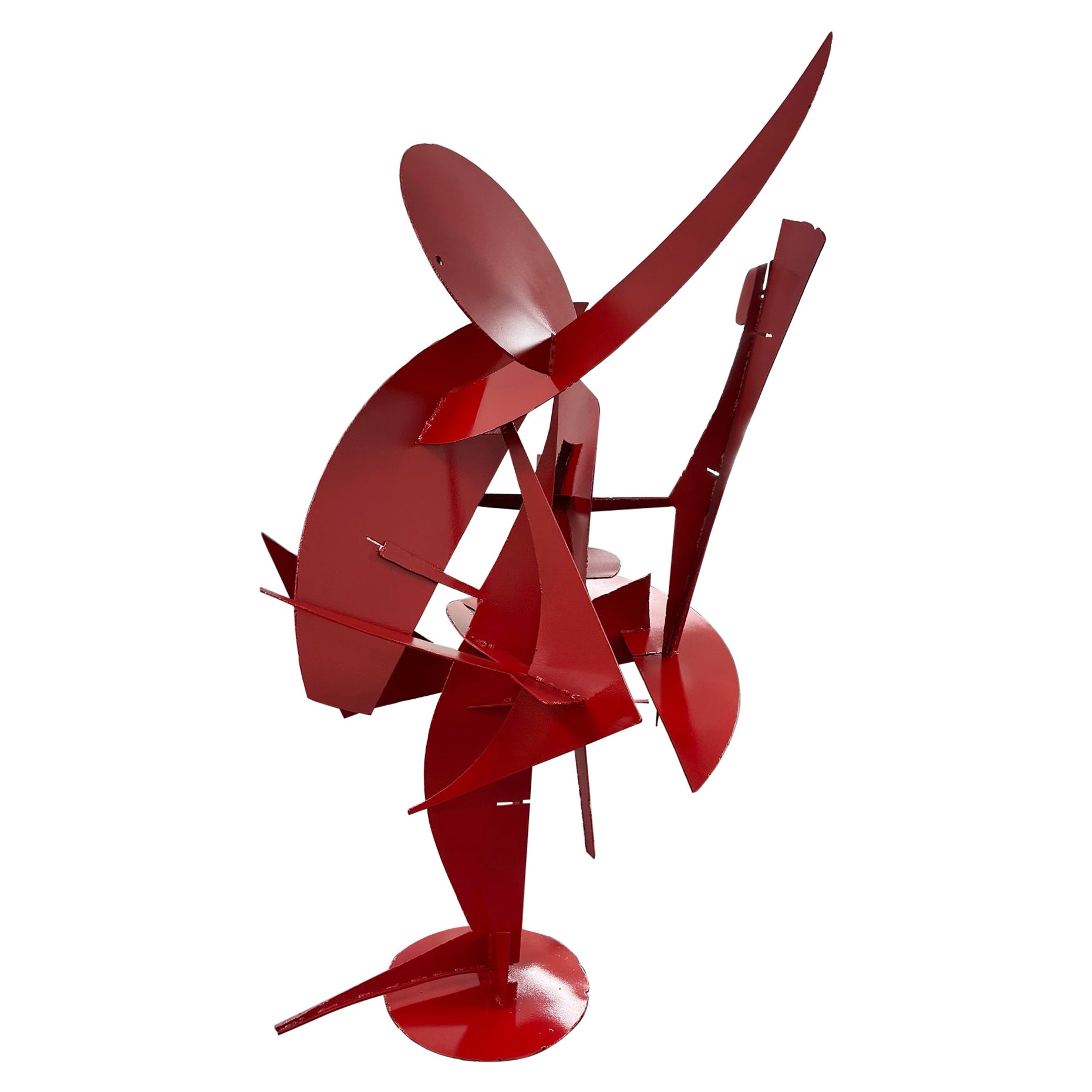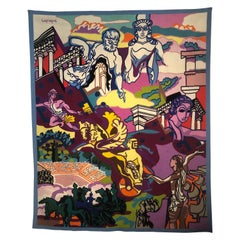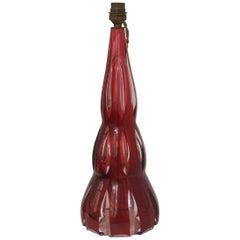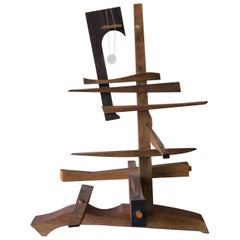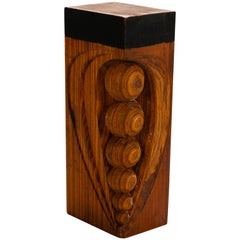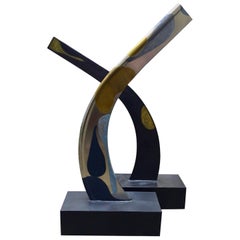
Contemporary Wood and Zinc Sculpture Indoor by Marielle Guégan French Artist
View Similar Items
Want more images or videos?
Request additional images or videos from the seller
1 of 7
Contemporary Wood and Zinc Sculpture Indoor by Marielle Guégan French Artist
About the Item
- Creator:Marielle Guégan (Artist)
- Dimensions:Height: 78.75 in (200 cm)Width: 58.27 in (148 cm)Depth: 11.82 in (30 cm)
- Materials and Techniques:
- Place of Origin:
- Period:
- Date of Manufacture:2014
- Production Type:New & Custom(One of a Kind)
- Estimated Production Time:Available Now
- Condition:
- Seller Location:Paris, FR
- Reference Number:Seller: Sculpt00111stDibs: LU4817215283941
About the Seller
5.0
Vetted Seller
These experienced sellers undergo a comprehensive evaluation by our team of in-house experts.
Established in 2017
1stDibs seller since 2019
54 sales on 1stDibs
Typical response time: 17 hours
More From This SellerView All
- Rare and Stunning Barbini Murano Sommerso Red Gold Flecks Coral SculptureBy BarbiniLocated in Paris, FranceBarbini red gold flecks art Murano glass coral sculpture. Intense red coral branch and gold flecks infused on a clear glass pot. The coral has a brass ring between the branch and the...Category
Mid-20th Century Italian Figurative Sculptures
MaterialsArt Glass, Murano Glass
- French Artist Charles Lapicque Tapestry Limited Edition 1/2 "Pelops", 1964By Charles LapicqueLocated in Paris, FranceExceptional limited edition 1/2 tapestry "Pelops" with certificate from a private collection, 1964. Ateliers Pinton brothers in Felletin, under the supervision of Pierre Baudouin 2ex + 1EA Editor Aram Iynedjian. The tapestry will be sold with its certificate of authenticity from the gallery. From the 15th century, the name of Pinton was associated with the Aubusson tapestry. Since then, over the generations, the Pinton family has largely contributed to the development of this fabulous cultural heritage until the creation in the 19th century, of the Felletin factory, in the department of Creuse. Even today, in these workshops, the craftsmen execute the same correct gestures with the same attention to detail and thus extend the chain of the history of the tapestry of tradition but also contemporary. The hand of specialists, the eye of designers and dyers and the taste of the most demanding clientele find their meaning in the fabric of the carpets. The excellence of French know-how, a living heritage society and custodian of Aubusson's cultural heritage, has always collaborated with great artists. The works of Charles Le Brun, Charles Lapicque, Pablo Picasso, Jean-Michel Othoniel, and many other big names in the world of painting, architecture, design, fell into the looms and know-how ancestral of this unique Creuse creator. Editor Aram Iynedjian Aram Iynedjian, Lausanne gallery owner and editor of tapestries from Braque, Estève and Lapicque, the latter meets Pierre Baudouin, the most famous of the cardboard painters of the time. The one who translated the works of Le Corbusier, Calder or Picasso into tapestry then collaborates with Charles Lapicque and they will develop a work of great richness. Lapicque came to realize these two summits which are "Pélops" and "Diane et Actéon". I realize that you should never try to describe a work of art Let’s look at it. Let us admire the science of composition, linear purity, technical perfection, the beauty of color, the truth of the drama. Let us see, if we can, the implacable presence of genius. "We will now understand that after having based a painting on the love of tapestry, it was relatively easy, and very tempting, to build a tapestry faithful to my painting," explained the artist in the exhibition catalog. of the Galerie Verrière in 1970. It was not until 1961 that he began to produce cardboards both for the tapestry of the Lisse in Aubusson, but also at the Mobilier National, with the help of Pierre Baudouin Charles Lapicque (1898-1988) Born in 1898 in Theizé (Rhône) in a family practicing both the arts and the sciences, Charles Lapicque is no exception to the rule: gifted for music and drawing, he graduated from the École Centrale in 1921, works as engineer until 1928 before integrating in 1931 a laboratory at the Faculty of Sciences of Paris, where he carried out research on the perception of colors, crowned by the title of Doctor of Physical Sciences in 1938. He thus studies the reactions of the eye in front of an intense light source, at the origin of the formation of starry images which he will use in his works, and defines a theory of the staggering of colors in space which overturns the rules of the Renaissance: "I had shown that the Classic rule, that of Vinci, advocating placing the blues in the distance, the reds, oranges and yellows in the foreground, is a nonsense; it makes more sense, more favorable to do the opposite. "(In Red and blue in the arts, 1936) It was around 1920 that Charles Lapicque began to paint in Brittany where he spent every summer since his childhood, first on the motif and then in a workshop that his stepfather Jean Perrin, Nobel Prize in Physics, had him build in 1927 ; he then definitively adopted the work of memory, in accordance with the art of music which he deeply loved and the Bergsonian philosophy of knowledge: "It is up to us to give reality an appearance that it has no itself, a form, a figure (...). " His youthful production immediately reveals a great originality, oscillating between figuration and abstraction which sometimes intertwine: alongside synthetic paintings by their simplified drawing and their flat colors, he designs an Homage to Palestrina (1925), composed of a grid derived from Cubism, entirely abstract, relayed by a Christ with Thorns (1939), according to a principle that he will develop after 1939, in line with his optical discoveries. In fact, during the war years, an almost abstract period began, that of the tight blue framework, applied to backgrounds ranging from yellow to red and revealing a more or less identifiable world (Jeanne d'Arc crossing the Loire, 1940; Rencontres series, 1940-1945). Exhibited in 1929 by the gallery owner Jeanne Bucher, Lapicque abandoned his scientific career in 1943 to devote himself entirely to painting. He continued his work which resulted in 1946-1953 in white-frame structures; their much softer lines lead him to the system of either black or white interlacing which encloses areas of pure color, most often in solid color. With The Battle of Waterloo in 1949, Lapicque still uses optics - zooming in on a given area - to depict spaces with multiple perspectives and decomposed times. This new interest in the liveliness of color developed in the following period, which can be described as flamboyant or Baroque (1954-1963): illustrated in particular by the series of Breton lagoons and twilight or nocturnal views of Venice in the light. Stars, which the artist himself describes as “daring sweets”, it begins with the Raoul Dufy Prize of the Venice Biennale, awarded in 1953 to the artist who took the opportunity to give free rein to his passion for the Serenissima until July 1956. Another point in common with his elder brother is the expression of movement. Begun in 1949 in The Battle of Waterloo then in 1952 with Dimanche aux regates, it became an obsession from 1964, in the exploration of new themes, such as the different shots of tennis players captured on the fly (1965), the mythological scenes and sea storms. These dizzying years precede the artist's last period: as he comes of age, he discovers serenity, revealed by a painting now with acrylic paint, much more peaceful from 1974, which even borders on a childish naivety at the end. of his life. All of his work includes an astonishing diversity of themes, also nourished by his travels (Rome in 1957, Greece in 1964, Holland in 1974 ...), with a predilection for the sea, rocks, sailboats, music, tennis, horses, wild beasts, but also for history and mythology, as evidenced by knights, kings and ancient gods. It also deploys, in total creative freedom, a wide variety of styles and orientations. Having been one of the pioneers of non-figurative art, thus paving the way for artists like Manessier, Bazaine, Vieira da Silva, De Staël, etc. Owners of the new non-figurative Paris School of the Postwar period, Charles Lapicque then returned to figuration, in a "new interpretation" of appearance, even if he continued to rub shoulders with abstraction at times. "Drawing runs after color and color after drawing. " Heir to the Fauves, Charles Lapicque plays like them on pure colors, whose dissonances, associated with a totally free design and an overloaded composition in a multiple space, make him a precursor of the New Figuration in all its forms: the Narrative Figuration born in France in the early 1960s, represented in particular by Gérard Fromanger, Erró, Bernard Rancillac and Gérard Guyomard; Free Figuration born in the early 1980s, marked by Robert Combas, Hervé and Richard Di Rosa, Louis Jammes and François Boisrond, and which, in turn, influenced the American Bad Painting of a Jean-Michel Basquiat or a Keith Haring, deliberately neglected and Expressionist; Lapicque's “Classic subjects” were able to feed Cultivated Painting, which also appeared in the early 1980s with Jean-Michel Alberola, Patrice Giorda and Gérard Garouste...Category
Mid-20th Century European Tapestries
MaterialsWool
- Fabulous Vintage Ruby Red French Crystal Table Lamp by Saint Louis ManufactureBy Cristalleries De SevresLocated in Paris, FranceExceptional and very rare handcut table lamp is in a clear and rich ruby red color double-layered crystal, it is a piece who required time for her shaping, outline, engrave and notch...Category
Late 20th Century French Table Lamps
MaterialsCrystal
- Italian Brass and Murano Amber Glass Tear Drop Chandelier by Paolo Venini, 1960By Paolo VeniniLocated in Paris, FranceA beautiful original vintage Italian chandelier designed by Paolo Venini in the 1960s in brass and Murano glass, this pendant is surmounted at the top by a crown of curved brass rods...Category
Mid-20th Century Italian Chandeliers and Pendants
MaterialsBrass
- Italian Brass and Murano Amber Glass Tear Drop Wall Lights by Paolo Venini, 1960By Paolo VeniniLocated in Paris, FranceA beautiful original vintage Italian pair of wall lamps designed by Paolo Venini in the 1960s in brass and Murano glass surmounted at the top by a half moon crown of curved brass rod...Category
Mid-20th Century Italian Wall Lights and Sconces
MaterialsBrass
- Pair of 1980s "East Side" Club Lounge Chair by Ettore Sottsass and KnollBy Knoll, Ettore SottsassLocated in Paris, FranceThis rare pair of tricolor "Eastside model" club armchairs was created by designer Ettore Sottsass for Knoll International. Its structure in gray steel tube and its soft leather cove...Category
Late 20th Century Lounge Chairs
MaterialsMetal, Aluminum
You May Also Like
- Great Wood Sculpture by the Artist Sidney RoseLocated in Asbury Park, NJWonderful wood sculpture with small magnifying glass hanging from it by a artist named Sidney Rose. Its signed 1995 but also looks to have a date on the one leg of 1974 so this may h...Category
1990s American Modern Abstract Sculptures
MaterialsWood
- Carved Wood Sculpture by Italian Artist Flaviano LaghiBy Flaviano LaghiLocated in Troy, MIThis mid century wood sculpture by Italian artist Flaviano Laghi dates from approximately 1980 is mounted on a dark wood base and features a...Category
Mid-20th Century Italian Mid-Century Modern Abstract Sculptures
MaterialsWood
- Whimsical Wood Sculpture by Noted NJ Artist Fred SchummBy Fred SchummLocated in Palm Springs, CAA wonderful wood sculpture by the noted NJ artist Fred Scumm. It is inscribed near the base with no date. Likely from the late 1980s or early 1990s. Colorfu...Category
Late 20th Century American Folk Art Sculptures
- Contemporary Metal Sculpture Artist Signed, 2008Located in Miami, FLContemporary Metal sculpture on black metal base signed by unknown artist and dated.Category
21st Century and Contemporary Unknown Modern Abstract Sculptures
MaterialsMetal
- Torso Sculptures in ZincLocated in London, GBPair of Zinc busts, male and female. Work well as a pair but we would be willing to sell them separately. Price shown is per bust.Category
Vintage 1960s French Figurative Sculptures
MaterialsZinc
$2,250 / item - Contemporary Cast Aluminium Sculpture by Danish Artist Marianne HesselbjergLocated in København K, 84Title: Cups and squares and a cone, -or an attempt to create a perfect cube. 2021 Cast aluminium (into the crust of the earth) Marianne Hesselbjerg (b.1949) "Marianne Hesselbjerg is making...Category
2010s Danish Brutalist Abstract Sculptures
MaterialsAluminum

